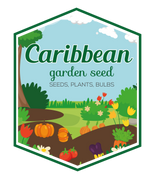MAKE YOUR OWN POTTING MIX
"Potting soil," for example, is very often sold as "garden soil," and is often labeled "for in-ground use." These products contain true dirt—mineral elements such as sand, clay, and loam. The best bagged soil products are formulated to mimic the components of the best natural soils found in the ground. True soil is generally not used for ordinary container gardening, but it is sometimes used to fill large raised beds, especially when the existing soil in a yard is of poor quality. Bagged soils are often mixed with compost to improve their nutritional value. When selecting bagged soil for your gardening needs, it is important to consider the specific requirements of the plants you will be growing.
"Potting mix" contains no dirt, but instead is a mixture of organic materials such as peat moss, along with elements aimed at improving drainage. These bagged products are sometimes labeled "soilless mix" or "soilless medium." This is the standard product used for most container gardening, both indoors and outdoors. They sometimes contain slow-release fertilizers as a component.
What To Used
For container gardening, both indoor and outdoor potted plants, as well as seed starting, use only potting mixes. Their special combination of ingredients ensures that the mix retains moisture and won’t compact to allow enough air space for tender roots to grow. Also, in sterile potting mixes, plants or seeds are not exposed to disease pathogens or weed seeds.
Potting mix is a much more controlled growing medium than potting soil.The best way to evaluate a potting mix is to observe how well your seedlings grow.
If your seeds have a high rate of germination, and the seedlings grow strong and green, all is well. Otherwise adjust your potting mix. The first place to start is to make sure the soil pH is at the right level Check the pH of your soil using a pH tester to ensure it falls within the optimal range for seedling growth..
Potting mix is better than garden soil, create your own mix for convenience.
Potting Mix Recipe
4 to 6 parts sphagnum peat moss or coir
1 part perlite
1 part vermiculite
Mix the ingredients thoroughly to create a well-balanced planting medium.
Potting Mix with Compost Recipe
2 parts compost
2 to 4 parts sphagnum peat moss or coir
1 part perlite 1 part vermiculite
Remember to mix the ingredients thoroughly to ensure even distribution.
Adding Nutrients to a Potting Mix
Add ½ cup each per every 8 gallons of the potting mix: ½ cup bone meal (for added phosphorous)
½ cup dolomitic limestone (raises soil pH and provides calcium and magnesium) ½ cup blood meal, soybean meal, or dried kelp powder (for added nitrogen) After adding the specified ingredients, thoroughly mix the potting mix to ensure even distribution.

![[Seeds] - Caribbeangardenseed](http://caribbeangardenseed.com/cdn/shop/files/gift-card-gift-card-1_1024x1024_dfa857db-9150-4315-a362-7f0bb3fb9c47_60x28.png?v=1703978838)
Leave a comment